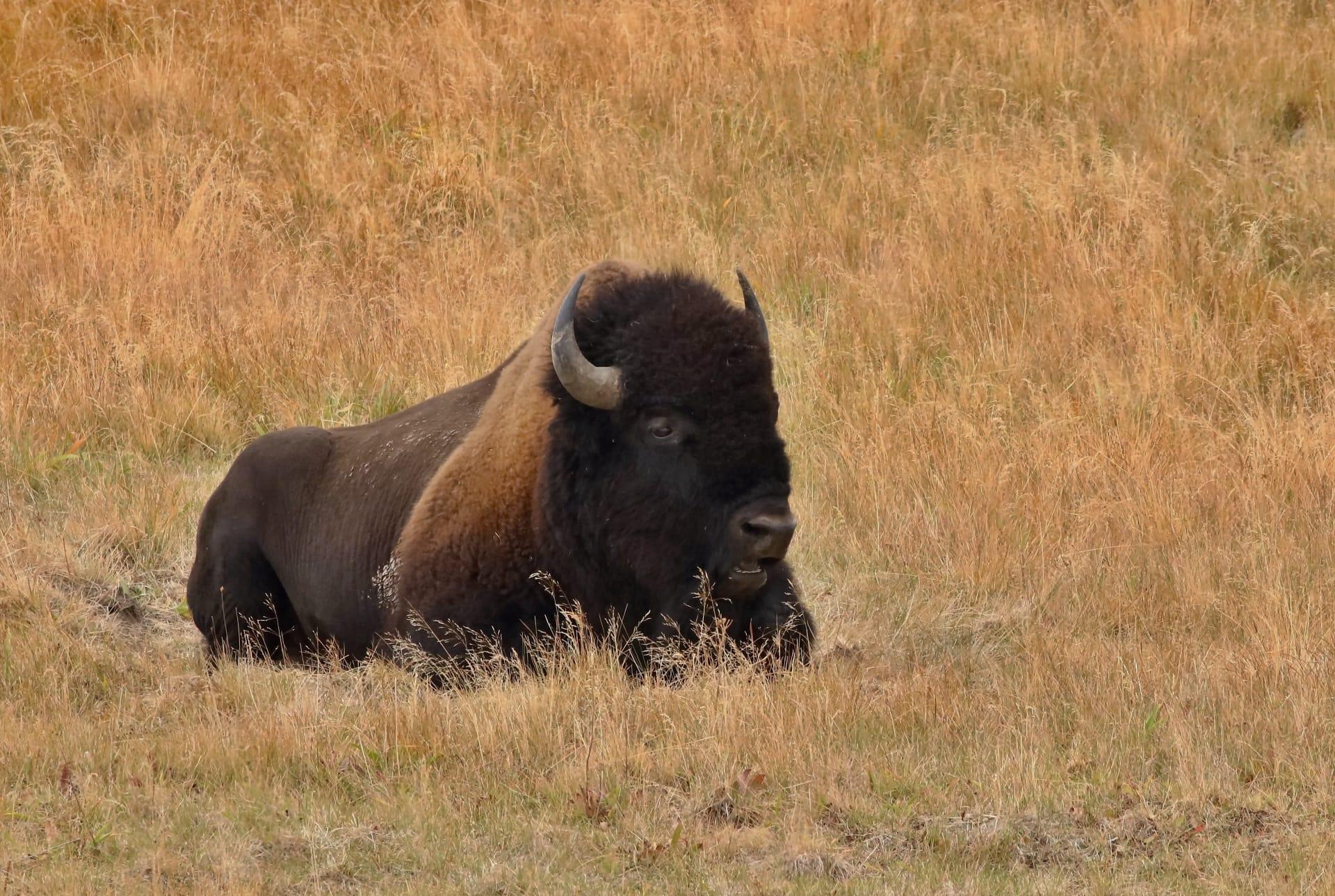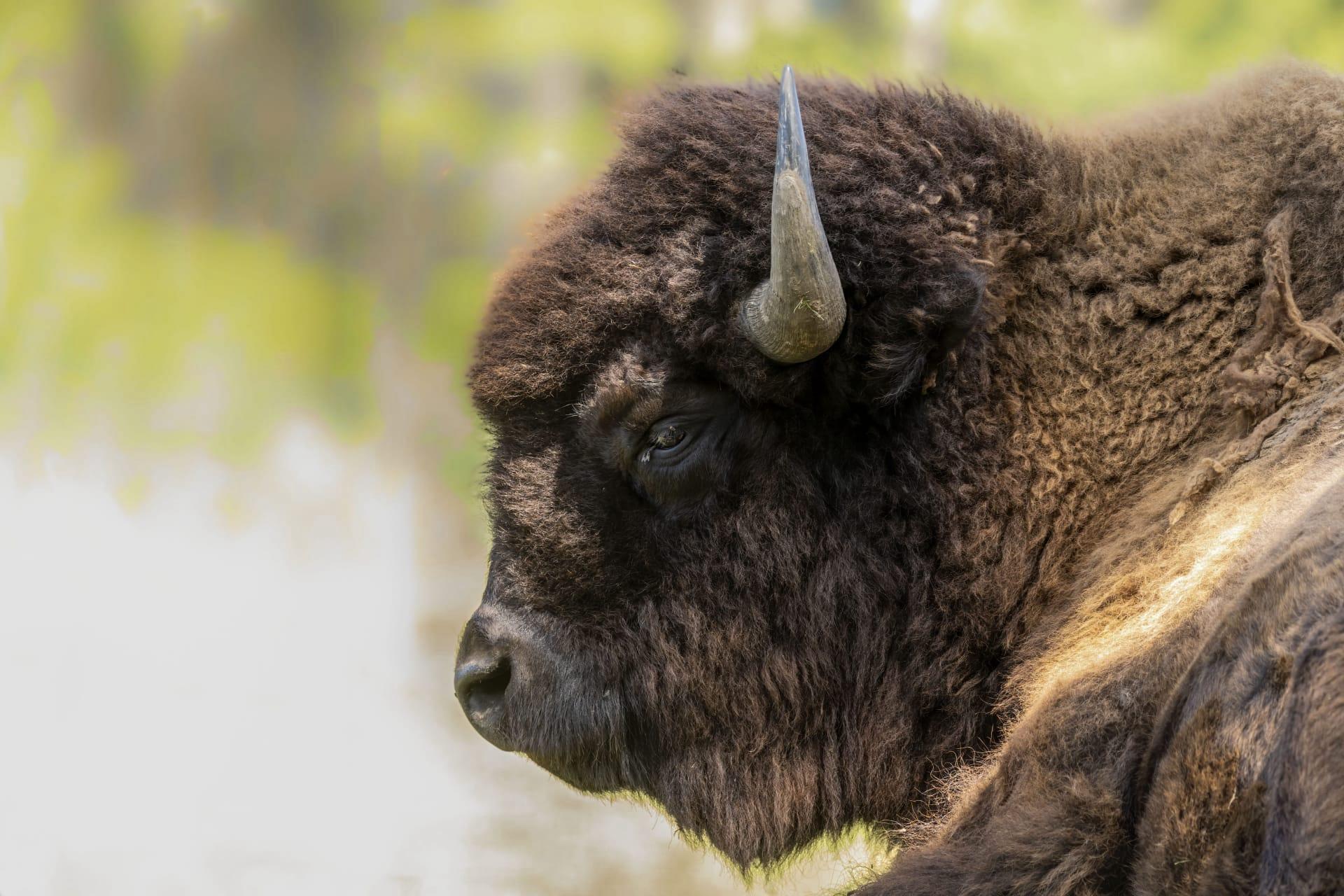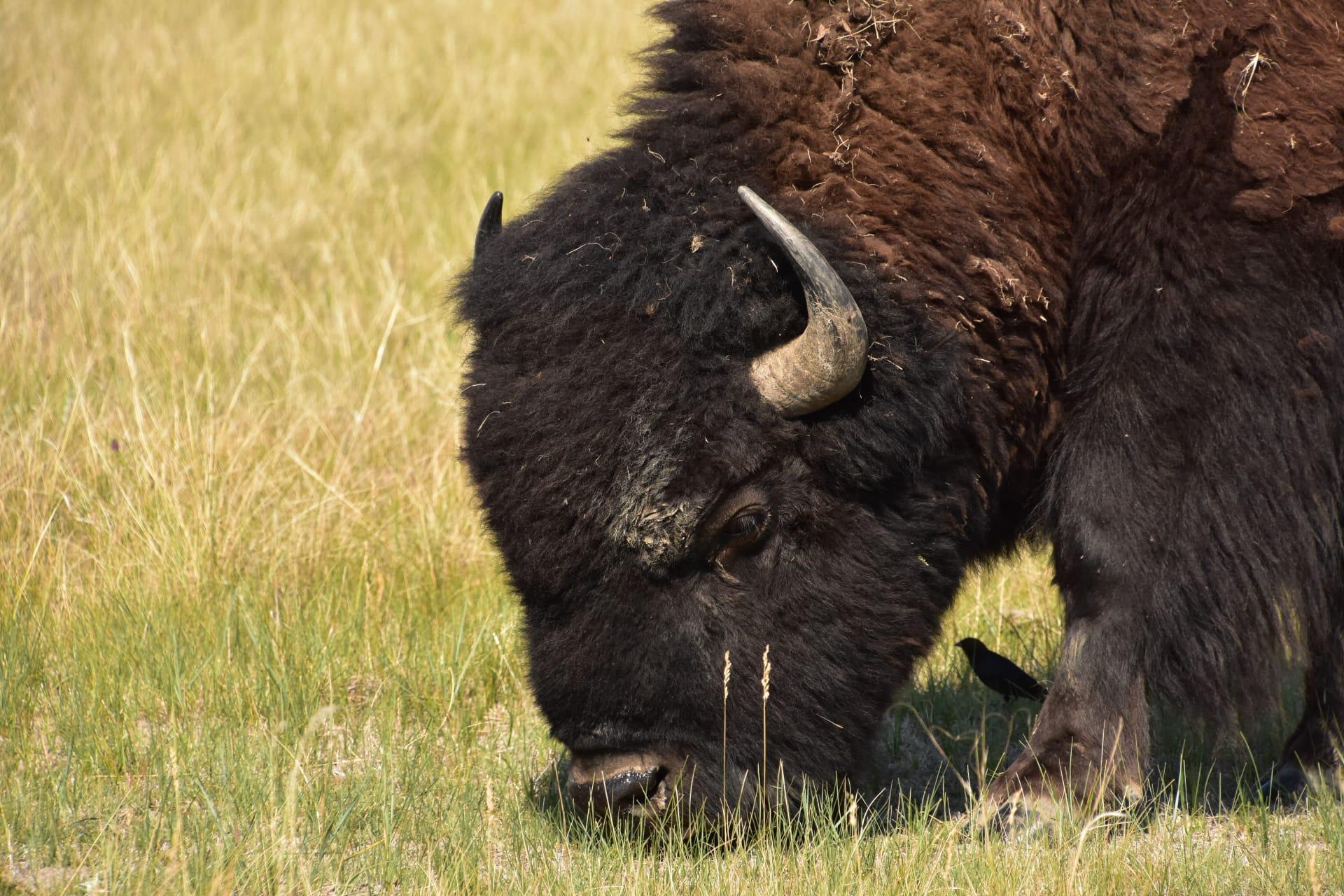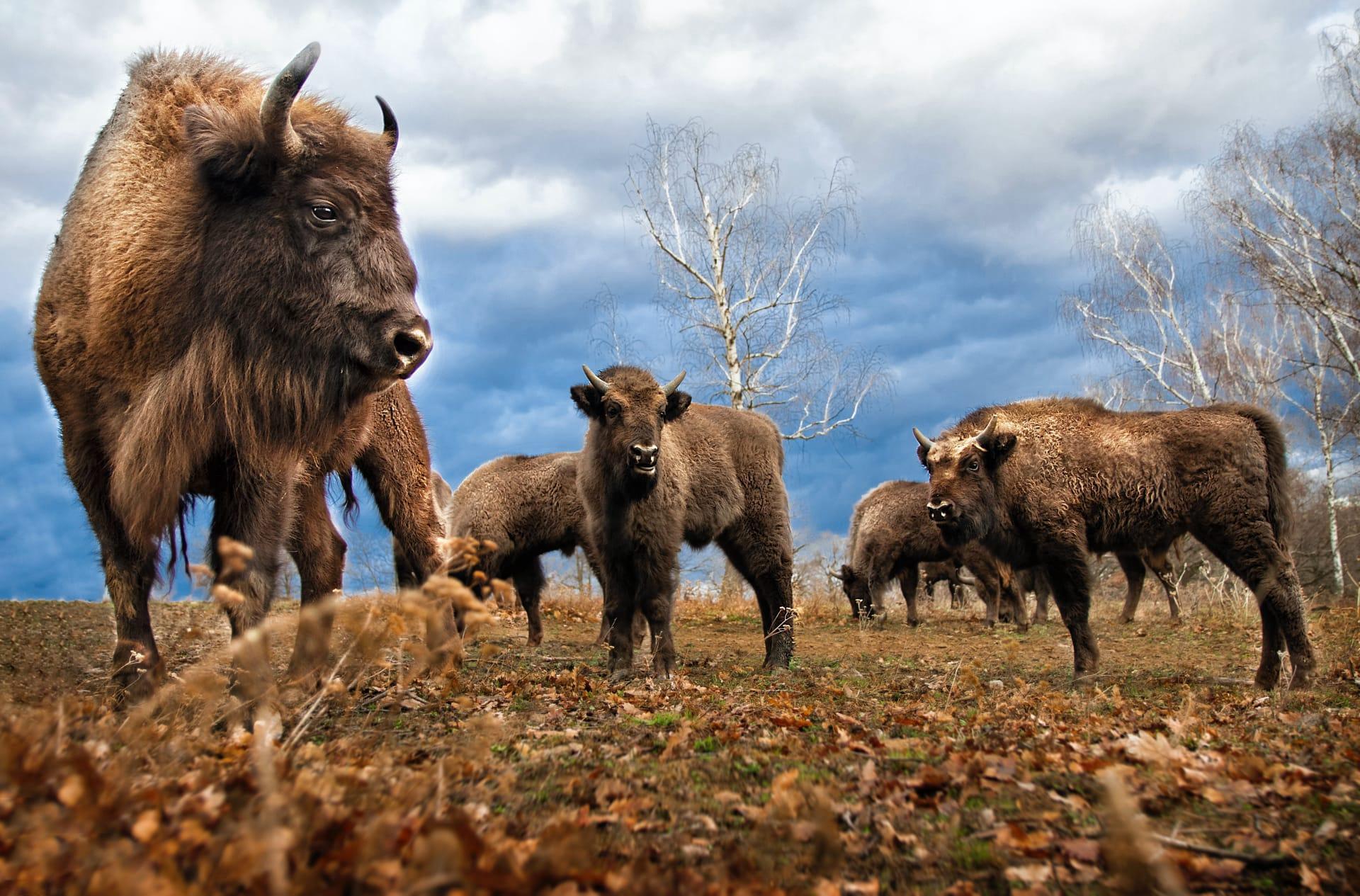American Bison
- Home /
- Mini Encyclopedia /
- Animal /
- American Bison
1
The American Bison, scientifically known as Bison bison, is a fascinating species belonging to the Bovidae family. This majestic creature is divided into two subspecies: the plains bison (Bison bison bison) and the wood bison (Bison bison athabascae). The plains bison is slightly smaller and has a more rounded hump, while the wood bison, the larger of the two, boasts a taller, square hump and is primarily found in Canada.
Once roaming in vast herds across North America, the American Bison's range has dramatically decreased over the centuries. Historically, they were found from Alaska to Mexico and from the eastern Appalachian Mountains to the Pacific Ocean. Today, their primary habitat is confined to national parks, reserves, and some private lands. The largest population of wild bison resides in Yellowstone National Park in the United States, with other significant populations in Utah, Arizona, Montana, and Canada's Wood Buffalo National Park.

2
Question: Do American bison and buffalo refer to the same animal?
Answer: This is a common misconception. The term "buffalo" is often used interchangeably with "bison" in North America, but they are distinct species. True buffaloes are native to Africa (Cape buffalo) and Asia (water buffalo), whereas the American Bison is native to North America. Bison are characterized by their massive head, shaggy mane, and robust build, distinguishing them from their buffalo counterparts.

3
The American Bison has adapted several survival strategies to thrive in its environment. One key tactic is their migratory behavior. Bison are known to travel long distances to find fresh grazing grounds and water sources, a practice that helps them avoid overgrazing and maintain healthy ecosystems. Additionally, their thick fur coat is perfectly adapted to harsh winter conditions, providing insulation against extreme cold.
Social structure is another crucial element of the bison's survival. Bison live in herds, which offer protection against predators. The herd's tight-knit formation during threats and the presence of strong, protective males (bulls) play a significant role in their defense. Also, bison are known for their agility and speed, capable of reaching speeds up to 35 miles per hour, which is surprising given their large size.

4
In the ecosystem, American Bison play a pivotal role in maintaining the balance of their habitats. As grazers, they shape the vegetation structure, promoting the growth of certain grasses while controlling the spread of others. This grazing pattern creates a diverse habitat that supports a wide range of other wildlife species.
Bison also influence soil health. Their movement and grazing stir up the soil, aiding in seed dispersal and nutrient cycling. Furthermore, their dung is a vital nutrient source for the soil, enhancing its fertility. This process not only benefits plant growth but also supports a variety of insects and microorganisms essential to the ecological network.

5
Film: "American Bison: Braving the Wild" (United States, 2019) is a documentary that explores the majestic life of the American Bison in their natural habitat. The film showcases the challenges they face, from harsh weather conditions to human-induced threats, and highlights conservation efforts to protect this iconic species.
Book: "The Bison's Last Stand: A Journey Through America's Heartland" (United States, 2021) by John Walker. This book delves into the historical journey of the American Bison, examining their near-extinction and the subsequent conservation efforts. Walker's narrative combines historical facts with personal observations, providing a comprehensive view of the bison's significance in American history.
Book: "Bison: Symbol of the American Wilderness" (Canada, 2020) by Helen Thompson. This work focuses on the relationship between the American Bison and the ecosystem. Thompson discusses the ecological impact of bison, their role in indigenous cultures, and the modern challenges in preserving this keystone species. Her writing intertwines scientific research with engaging storytelling, offering a unique perspective on the bison's role in North American ecology.